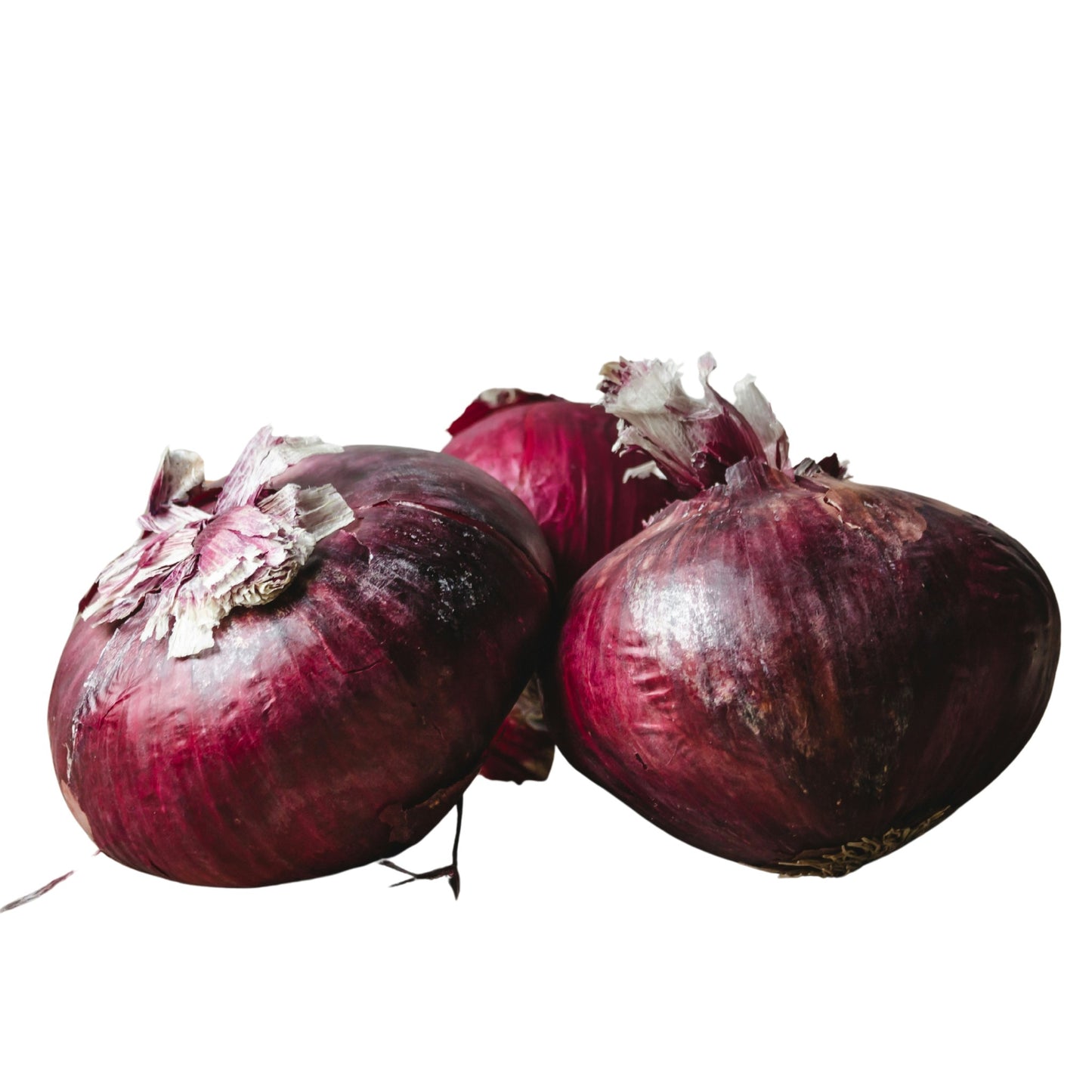JONQUIL
Red Creole Onion - 0.5 Gram
Red Creole Onion - 0.5 Gram
Couldn't load pickup availability
Red Creole is a short-day onion prized for its ability to thrive in warmer climates and its deep red to purplish-red skin with firm white to pinkish flesh. It produces small to medium, flattened bulbs with a robust, slightly spicy taste that mellows when cooked.
Bulb shape Flattened globe
Skin Reddish-purple, dry and papery
Flesh White with red rings or blush
Flavour Pungent, spicy when raw; sweet and mellow when cooked
Size 6–8 cm average diameter
Storage Good (3–5 months when properly cured)
Maturity 100–110 days from seed
Growing Conditions
Sunlight Full sun (6–8 hours per day minimum)
Soil Loose, well-drained soil rich in organic matter
pH Slightly acidic to neutral (6.0–7.0)
Watering Keep consistently moist during active growth; reduce watering as bulbs mature
Feeding Start with compost or balanced fertilizer; side-dress with a low-nitrogen fertilizer during the bulb phase
Growing Season
Type Short-day onion – requires 10–12 hours of daylight to form bulbs
Best for Warm and mild-winter climates
Sow
Mild/warm regions Sow outdoors in autumn or early winter for late spring/summer harvest
Cooler climates Start indoors in late winter and transplant after frost danger passes
Harvest 100–110 days after sowing; midsummer if autumn-sown
Sowing Instructions
From Seed (preferred for best results)
When to sow
Autumn in warm regions (Sept–Nov)
Late winter indoors for cool areas (Jan–Feb)
Seed depth 0.5–1 cm
Spacing
Thin or transplant to 10–15 cm between plants
Rows 25–30 cm apart
Germination temperature 13–25°C
Time to germinate 7–14 days
From Sets or Transplants
Sets are convenient but may bolt more easily
Transplant when seedlings are 10–15 cm tall
Common Pests & Problems
Pests
Thrips Silvery streaks on leaves – treat with neem oil or insecticidal soap
Onion Maggots Tunnel into bulbs – rotate crops, use floating row covers
Cutworms Cut young stems at base – use collars or beneficial nematodes
Aphids Cluster on leaves – wash off with water or use neem oil
Slugs/Snails Chew on seedlings – use traps or diatomaceous earth
Diseases
Downy Mildew Yellow blotches, fuzzy growth – avoid overhead watering, improve airflow
Purple Blotch Dark spots on leaves – remove affected foliage, use copper fungicide
White Rot Wilting and root decay – avoid replanting onions in same area
Neck Rot Affects stored bulbs – ensure thorough curing before storage
Harvesting & Storage Tips
Harvest when tops fall over and start yellowing
Curing Dry in shade for 2–3 weeks in a well-ventilated space
Trimming Cut tops to 2–3 cm and remove roots once fully dry
Storage Keep in a cool, dry, dark space with good airflow (mesh bags or baskets work well)
Share


